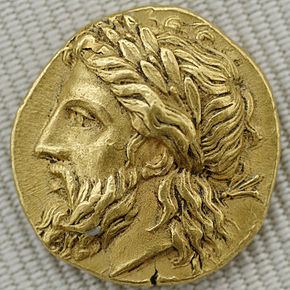Type Settlement | ||
 | ||
Alternate name Pityusa, Pityussa, Lampsakos Weather 8°C, Wind NE at 24 km/h, 85% Humidity | ||
Lampsacus (/ˈlæmsəkəs/; Ancient Greek: Λάμψακος, Lampsakos) was an ancient Greek city strategically located on the eastern side of the Hellespont in the northern Troad. An inhabitant of Lampsacus was called a Lampsacene. The name has been transmitted in the nearby modern town of Lapseki.
Contents
Ancient history
Originally known as Pityusa or Pityussa (Ancient Greek: Πιτυούσ(σ)α), it was colonized from Phocaea and Miletus. In the 6th century BC Lampsacus was attacked by Miltiades the Elder and Stesagoras, the Athenian tyrants of the nearby Thracian Chersonese. During the 6th and 5th centuries BC, Lampsacus was successively dominated by Lydia, Persia, Athens, and Sparta; Artaxerxes I assigned it to Themistocles with the expectation that the city supply the Persian king with its famous wine. When Lampsacus joined the Delian League after the battle of Mycale (479 BC), it paid a tribute of twelve talents, a testimony to its wealth; it had a gold coinage in the 4th century, an activity only available to the more prosperous cities.
A revolt against the Athenians in 411 BC was put down by force. In 196 BC, the Romans defended the town against Antiochus the Great, and it became an ally of Rome; Cicero (2 Verr. i. 24. 63) and Strabo (13. 1. 15) attest its continuing prosperity under Roman rule. Lampsacus was also notable for its worship of Priapus, who was said to have been born there.
The philosopher Anaxagoras was forced to retire to Lampsacus after a trial in Athens around 434-33 BC. The citizens of Lampsacus erected an altar to Mind and Truth in his honor, and observed the anniversary of his death for many years.
Lampsacus produced a series of notable historians and philosophers. Charon of Lampsacus (c. 500 BC) composed histories of Persia, Libya, and Ethiopia, and annals of his native town. Metrodorus of Lampsacus (the elder) (5th century BC) was a philosopher from the school of Anaxagoras. Strato of Lampsacus (c. 335-c. 269 BC) was a Peripatetic philosopher and the third director of Aristotle's Lyceum at Athens. Euaeon of Lampsacus was one of Plato's students. A group of Lampsacenes were in the circle of Epicurus; they included Polyaenus of Lampsacus (c. 340 – 278 BC) a mathematician, the philosophers Idomeneus of Lampsacus, Colotes the satirist and Leonteus of Lampsacus; Batis of Lampsacus the wife of Idomeneus, was the sister of Metrodorus of Lampsacus (the younger), whose elder brother, also a friend of Epicurus, was Timocrates of Lampsacus.
Christian history
According to legend, St Tryphon was buried at Lampsacus after his martyrdom at Nicaea in 250.
The first known bishop in Lampsacus was Parthenius, under Constantine I. In 364, the see was occupied by Marcian and in the same year a council of bishops was held at Lampsacus. Marcian, was summoned to the First Council of Constantinople of Constantinople in 381, but refused to retract his adherence of the Macedonian Christian sect. Other known Bishops of Lampsacus were Daniel, who assisted at the Council of Chalcedon (451); Harmonius (458); Constantine (680), who attended the Third Council of Constantinople; John (787), at Nicaea; St. Euschemon, a correspondent of St. Theodore the Studite, and a confessor of the Faith for the veneration of images, under Theophilus. The See of Lampsacus is mentioned in the "Notitiae Episcopatuum" until about the 12th or 13th century. The famous Lampsacus Treasure, now in the British Museum, dates from this period. The Bishopric remains a vacant and titular see.
